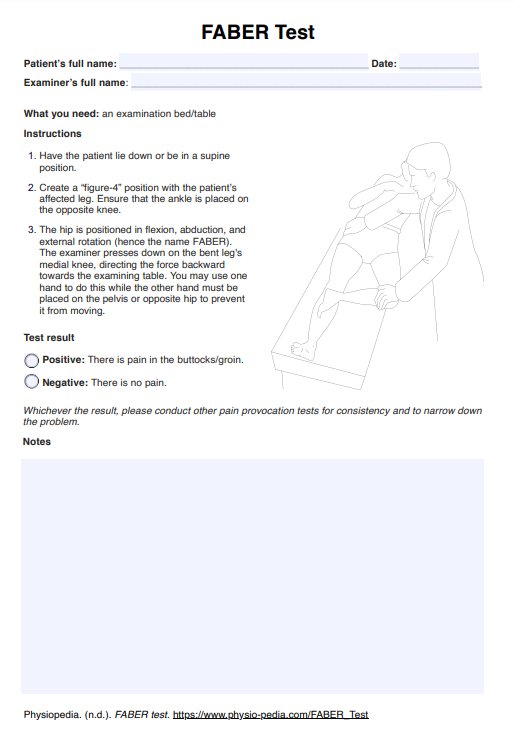Practitioners such as physical therapists, orthopedic therapists, sports therapists, and general physicians most likely use and benefit from the FABER Test templates.

Faber Tests
Identify any possible pathologies in the sacroiliac, lumbar, or hip region with a FABER Test. Read this guide for more information on the test and a template.
Use Template
Faber Tests Template
Commonly asked questions
The FABER Test and the template are used during the test when the patient needs to reproduce the symptoms they’ve experienced due to a possible hip, lumbar, or sacroiliac joint pathology.
It would be best to conduct other tests to get consistent results and to narrow down the potential problem.
EHR and practice management software
Get started for free
*No credit card required
Free
$0/usd
Unlimited clients
Telehealth
1GB of storage
Client portal text
Automated billing and online payments











